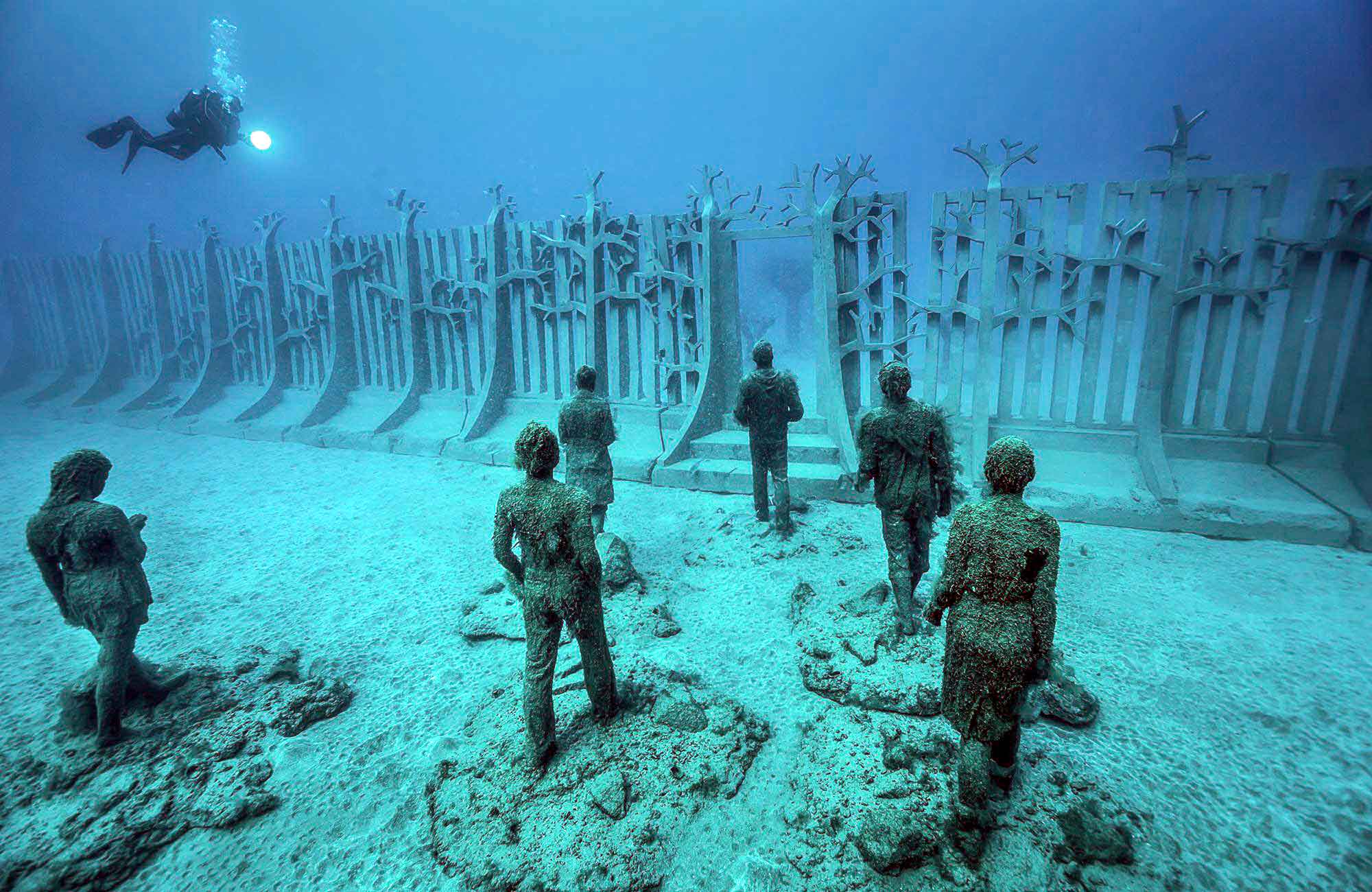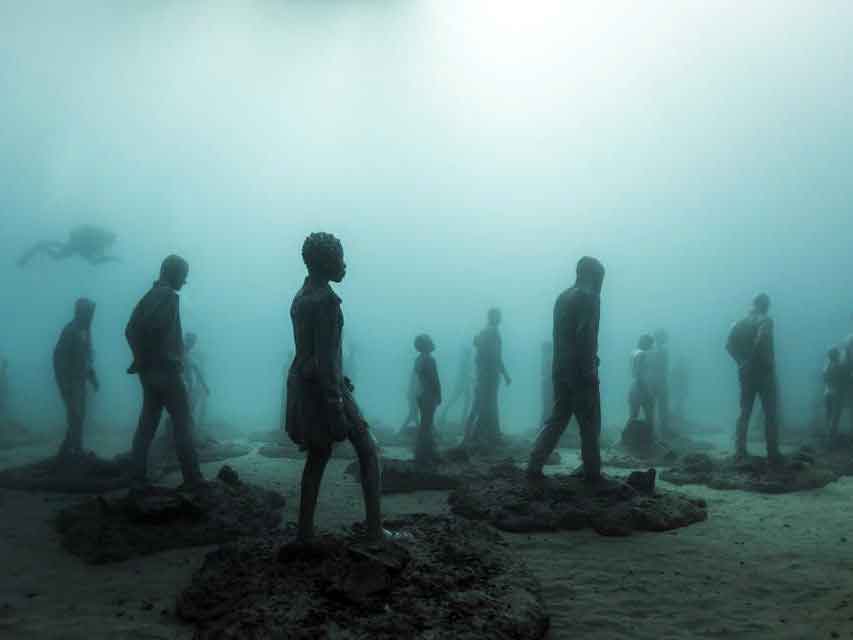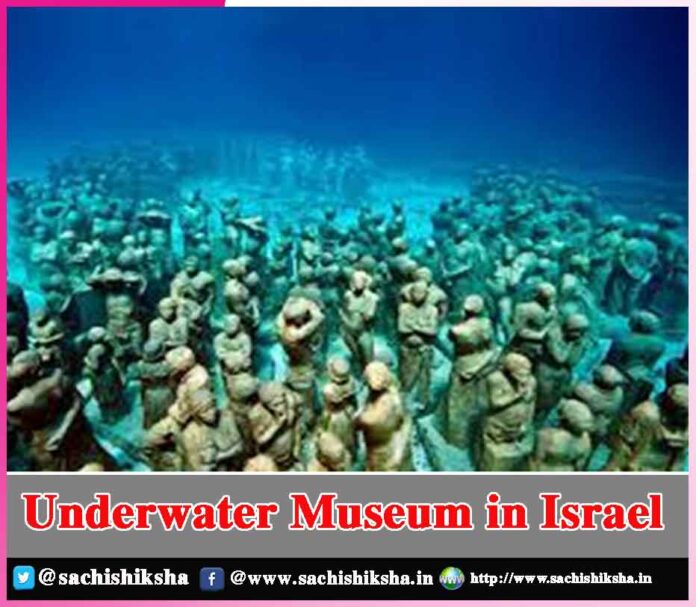Underwater Museum in Israel
Table of Contents
Museum is a place
that contains information about human culture to be presented to the society as a source of knowledge. In general underwater museum can be interpreted as a museum that displays collection and information about underwater sites.
Many of these heritages are still in their original allocations which is in-situ, as well as heritage that has been raised from its site or commonly called as ex-situ.
According to its collection& location, underwater museum can be distinguished into two types: in-situ and ex-situ.
Also Read :-
- Interesting Myths Around The World
- A Hotel Under Seawater – No Longer an Imagination
- Best Monsoon destinations to Explore in India
- Mystery of Kumari kanddam – Place in Waters of the Indian Ocean
The In-Situ Underwater Archeological Museum (UCH)
displays UCH in its original context. The example of in-situ underwater archaeological museum is Caesarea Old Harbour. This harbor is a huge harbor created by King Herod to honour the Roman Emperor Augustus. It is the biggest harbor in the Roman Empire in the year of 10 B.C. It is located in the Mediterranean Sea, Coast of Israel.
Caesarea Underwater Archeological Park
is the first Underwater Archeological Park in Israel and around the world. The park was built by researchers from the University of Haifa together with the Caesarea Development Company. It was opened in 2006. Visitors float from exhibition to exhibition to see the sunken harbour. There are 36 different sign-posted sites along four marked trails of the sunken harbour. Visitors are also given water-proof map. One trail is accessible to snorkelers while the others are all designed for beginning divers.
The entire area of the sunken ports

These hydraulics concretes consist of volcanic ashes, lime, and sand which harden in the sea. The dive at the park is conducted by professional instructors who make this a unique and unforgettable diving adventure. An experienced diving instructor at the Caesarean Diving Center will teach you the basics of diving and familiarize you with the scuba equipment before accompanying you on a controlled dive in King Herod’s sunken harbor.
The site was initially recognized by a marine expedition
in 1960. Most of the underwater excavations were held since 1975 by the Centre for Maritime Studies of the Haifa University, headed by Prof. AvnerRaban, until his untimely death in 2004. Four different tracks and underwater experiences explore the original pillars, structures, giant anchoring rocks and other bits and pieces of the lost empire lying beneath the surface.
Herod
built storerooms, markets, wide roads, baths, temples to Rome and Augustus. Herod built his palace on a promontory jutting out into the sea, with a decorative pool. Every five years the city hosted major sports competition, gladiator games, and theatrical productions in its theatre overlooking the Mediterranean Sea. During its heyday, it was the first large scale artificial harbor, the biggest and most modern harbor in the entire Roman Empire, even rivaling Cleopatra’s harbour at Alexandria.
In approximately one decade (c.23–15 BCE), local and Roman builders working for King Herod of Judaea constructed the largest artificial harbour ever built in the open sea, an unprecedented engineering feat. Today, most of the Herodian port is underwater.
How did such a massive structure disappear?

By the mid sixth century, the waves had destroyed the pier and blocked the inner port. The effects of the tsunamis that hit the East Asian coast in the last decade support this idea. Layers of deposits off the Caesarea coast, surveyed by the Institute for Maritime Studies, indicate that tsunamis have occurred here. In view of the damage done by recent storms and the way modern harbors weathered them, perhaps it was simply a lack of maintenance that destroyed Caesarea’s glory. Without a strong, central regime committing the necessary resources, the situation quickly deteriorates.
Judging by the comments of ancient historians as well as the archaeological record,
J the port of Caesarea dwarfed other Roman harbours. It was certainly the most sophisticated of its time, and very possibly the first ever to be built in the open sea, where there was no natural bay. But this structure’s days were numbered.
Herod’s heirs were less powerful and connected to Rome than he had been, so the port of Caesarea ranked much lower on their list of priorities. Meanwhile, the ravages of winter after winter mounted, possibly aggravated by the tsunami. Within a short time, the enormous effort and investment Herod had poured into Caesarea were sucked into the depths. All that remains are some very scenic ruins and the thought that man’s achievements, no matter how impressive, areephemeral.













































